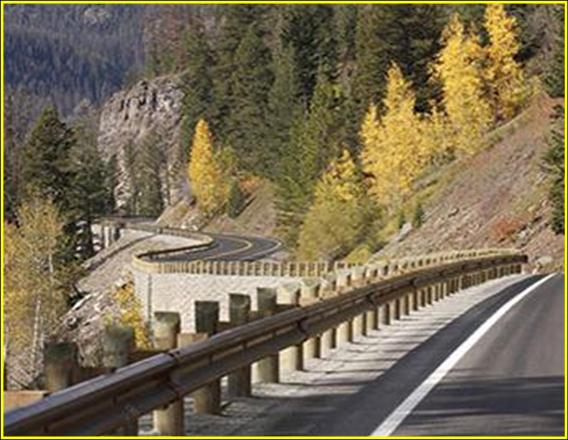Assessing the Carbon Sequestration Potential of Roadside Re-vegetation
Funding: U.S. Dept. of Transportation, Federal Highway Administration
Synopsis

The increase of the atmospheric concentration of greenhouse gases (GHG) over the past century has led to global warming and the search for opportunities to reduce the atmospheric concentration of carbon dioxide (CO 2), a major GHG. The primary methods to reduce atmospheric CO 2 are through the reduction of emissions, the capture and storage of CO 2 to prevent its release into the atmosphere, and the absorption of atmospheric CO 2 by vegetation and soil. The transportation sector contributed nearly 28% of the United States’ greenhouse gas emissions in 2006, only energy generation was higher at 34% (EPA 2008). Within this sector, the U.S. road system is a major component of the nation’s transportation infrastructure with 4,011,635 miles of public roads managed by various entities, including federal, state, county, and municipal agencies (U.S. Census Bureau 2007). Biological carbon sequestration, through the use and management of land, is a viable means of increasing the absorption of atmospheric carbon by vegetation and soil. The two major U.S. sectors addressing biological carbon sequestration are forestry and agriculture (CBO 2007). A variety of forest and agricultural practices have proven effective at increasing carbon sequestration (e.g., afforestation, no till cropping, changing grazing practices). At this time, the amount (acreage) of land along public road right-of-ways (ROWs) has been approximated for the 163,000 miles of roadway in the National Highway System of the contiguous U.S., resulting in a calculation of roughly 3.4 million acres that is unpaved in ROWs (FHWA 2010). This estimate reviews only a small portion, approximately 4%, of the nation’s public roads. Since there are many other road systems in the public sector, the analyses in this project will complement and add to this first estimate. The potential to capture and store carbon in other managed public road ROWS, such as the US Forest Service (USFS), National Park Service (NPS), Bureau of Land Management (BLM), counties, etc. will provide additional information for decision-makers. This study will add a more robust estimate of the nation’s public transportation networks for the current and potential contribution of the millions of miles of ROW along U.S. public roads to capture and store carbon. It will describe potential changes in vegetation and vegetation management that have the potential to reduce greenhouse gas emissions. It will allow policy makers to evaluate the role this portion of the transportation infrastructure and its management can contribute to the overall reduction of US contributions to GHGs.
Collaborators
- Rob Ament, Western Transportation Institute, Montana State University
- Paul Stoy, Montana State University
- James Begley, Western Transportation Institute, Montana State University
- Tony Hartshorn, Montana State University
- Chris Cote, Montana State University
Publication
Ament et al., 2014. Western Federal Lands Highways, Federal Highway Administration
